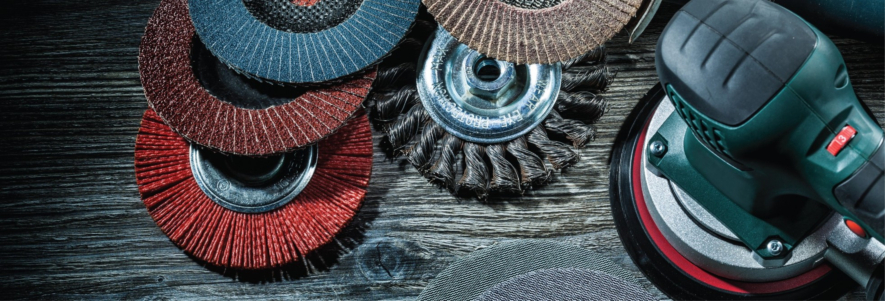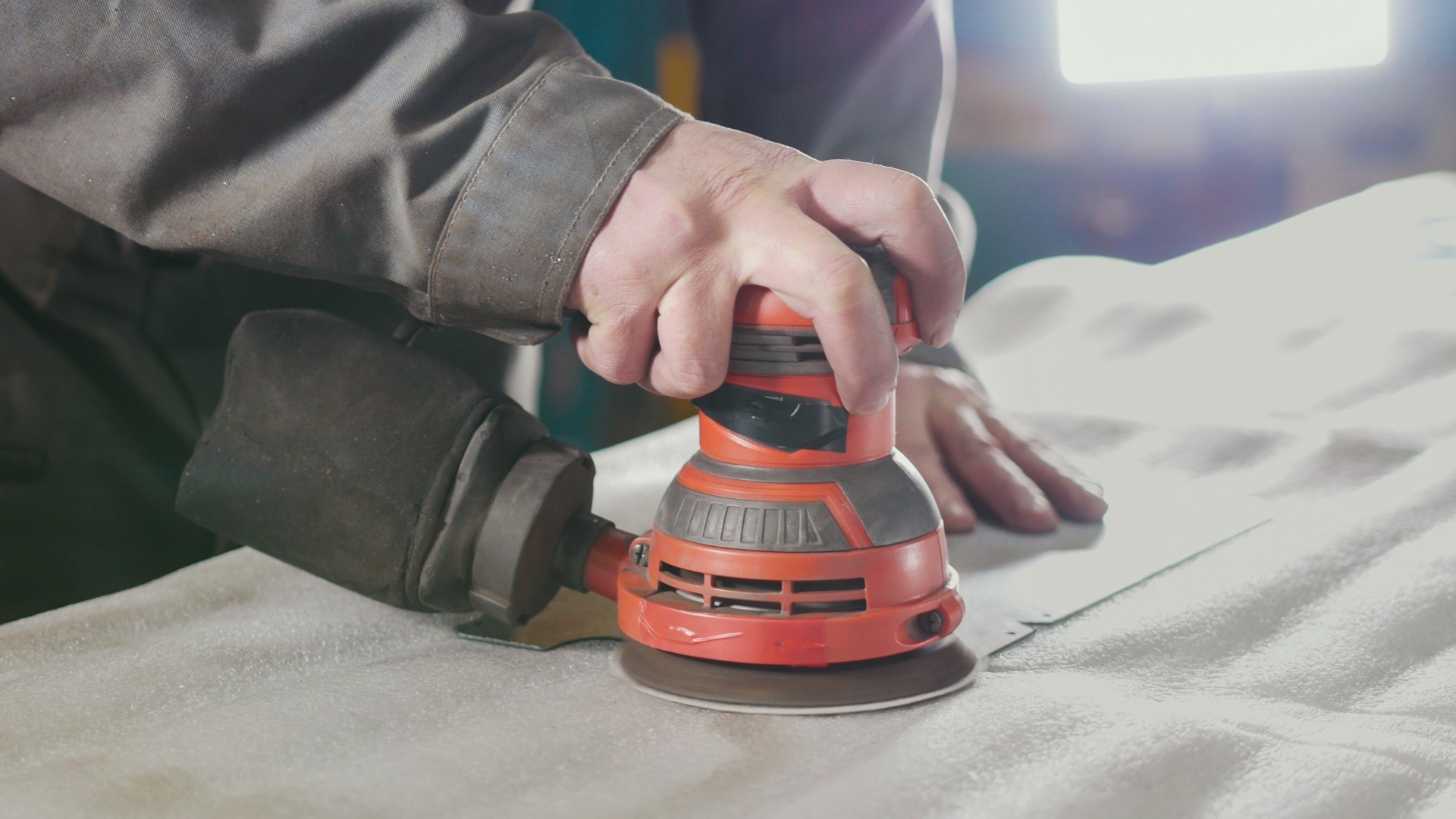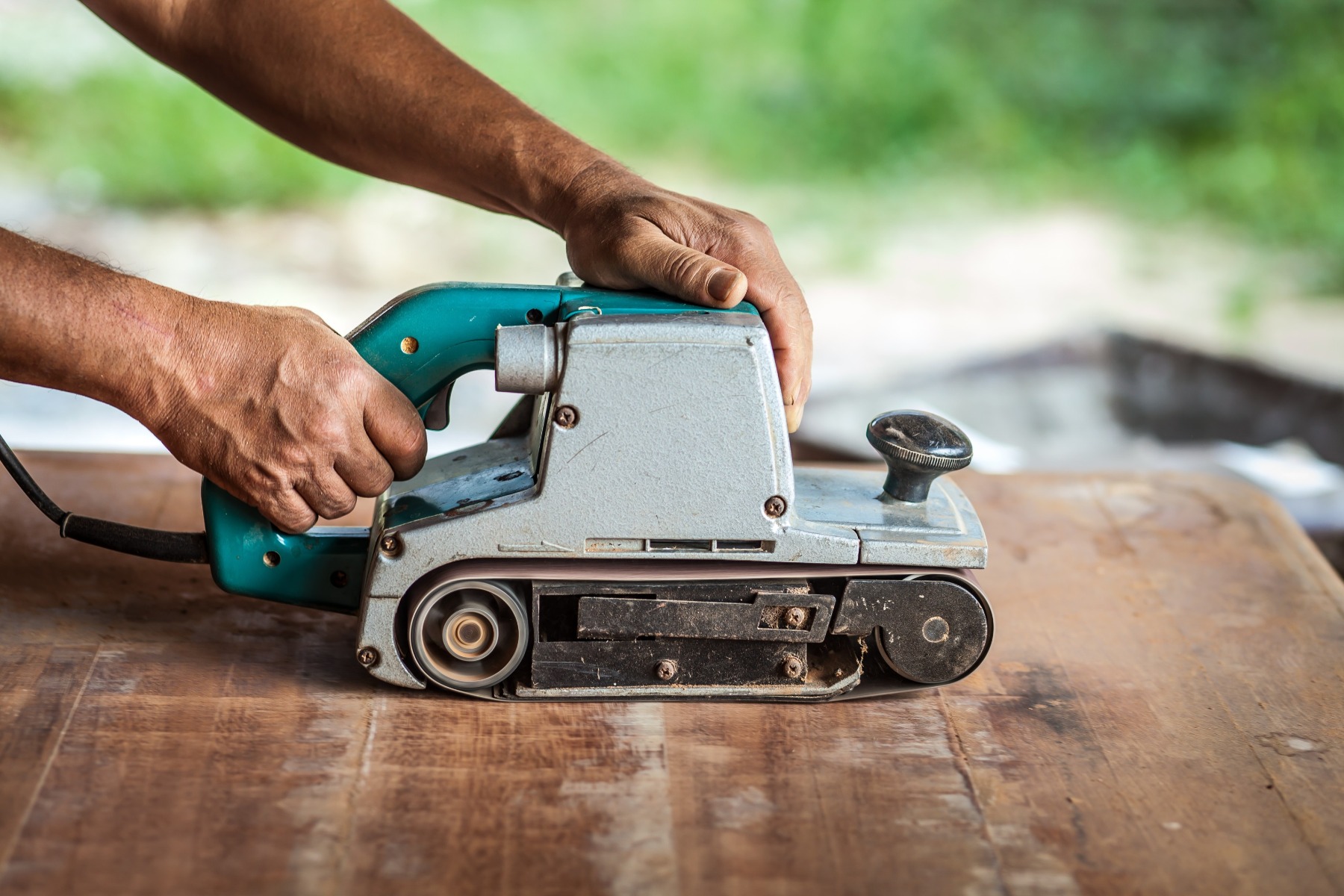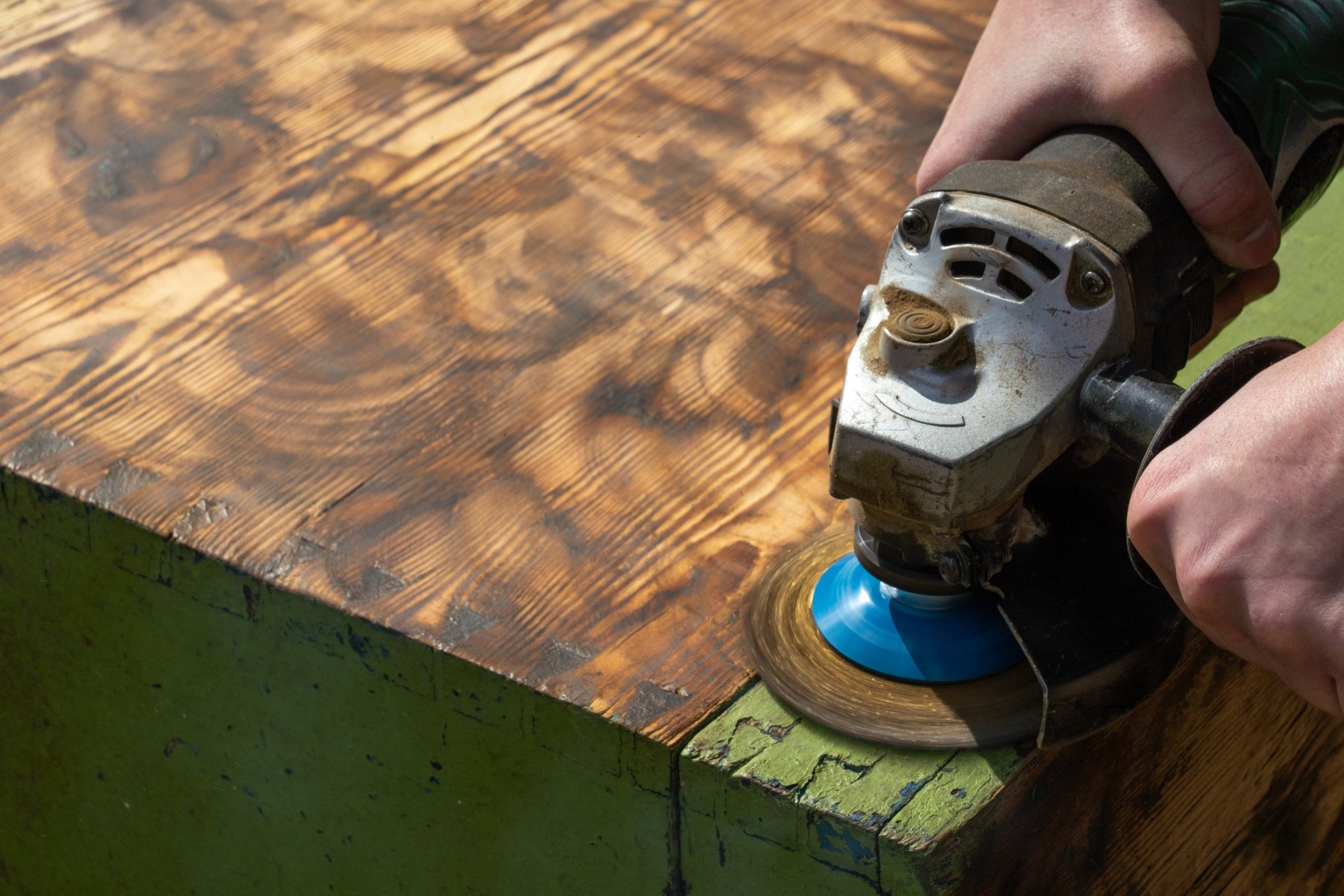
The value of training workers about belt and disc sander hazards and precautions cannot be understated. This class of commercial tools generates health risks such as airborne dust particles and poses a significant danger of laceration.
Although widely used across industries, new workers are not always taught how to properly use a disc sander. Without strict guidelines regarding belt and disc sander safety rules and protocols, workers face a dual threat of getting injured or suffering a debilitating health condition.
Companies that require commercial sanding operations are also required to provide a complete inventory of personal protective equipment (PPE) and protective clothing.
What is Sanding Equipment Used For?
Sanding equipment is typically used to prepare the surface of numerous materials for finishing. Although generally associated with removing the top layer(s) off wood to prepare it for staining, varnishing, or paint, commercial sanders are routinely used to refine other materials.
These materials can include metal, plastic, ceramics, fiberglass , concrete, and more. Sanders are also used to remove surface substances to repurpose and restore products as well. Commercial sanders typically fall into two categories — disc or belt sanders.
What is a Disc Sander?
As the name implies, disc sanders usually involve a circular plate that spins to create friction when coming into contact with materials. The abrasive discs sometimes mirror those of circular saw blades and can be mounted to many different power tools. Some equipment is specifically designed for these hard sanding pads.
Tools such as table saws may also be used as a stable hub for disc sanding. The majority of disc sanders are handheld tools that offer flexible handling to round corners and smooth select areas. It’s critical that employees are taught how to use a disc sander by an experienced professional before working alone.

What is a Belt Sander?
The most significant difference between a disc sander and a belt sander involves the application. Unlike disc sanders that rotate in a circular fashion, belt sanders mimic conveyors. The sandpaper is clasped into handheld devices or large fixed equipment that causes a drum to spin at high rates.
Belt sanders are commonly used to strip away old paint and lacquers. Like the way discs can be integrated into a table saw, standup belt sanders are commonly used in machine shops. Handheld belt sanders are ideal for finishing large flat surfaces. In workplaces that use standalone equipment, posting belt and disk sander safety rules are essential.

What Industries Commonly Use Sanding Equipment?
From a health and safety perspective, it’s important to understand that even infrequent use of a belt or disc sanders creates hazardous dust particles. These sometimes difficult-to-see elements can enter the lungs, eyes, ears, or affect the skin.
It’s also not uncommon for fragments to injure a worker’s eyes or penetrate the hands with hazardous slivers. People who work in the following industries are advised to exercise due diligence and wear protective clothing and PPE when using sanders.
- Machine Shops
- Woodworking Shops
- Product Refurbishment Businesses
- Carpentry and Masonry
- Auto Body Repair and Painting
- Boatmaking Facilities
- Wood and Concrete Floor Finishing
Disc and belt sanders serve the same fundamental purpose of preparing a surface. These may involve removing old paint and substances that cling to it, such as rust. Sanders also help refine the surfaces of newly created products. While manufacturing and construction sectors enjoy significant benefits from sanders, the tiny dust particles that are released pose a health and safety hazard.
Belt and Disc Sander Hazards and Precautions
Belt and disc sanders present significant workplace dangers. Employees should be trained in proper safety techniques and the use of necessary PPE and disposable clothing. Failures to follow safety protocols such as the following can result in injury.
- Only use sanders on appropriate surfaces.
- Make sure the space has adequate ventilation before sanding materials.
- Mount fixed sanders according to product guidelines.
- Check to ensure the belt or disc is firmly secure before using.
- Never wear loose-fitting gloves when using a sander.
- Never wear loose-fitting sleeves when using a sander.
- Do not sand materials while wet solvents are present.
It’s also essential to utilize dust bags whenever possible. Many handheld tools integrate a vacuum that channels dust into a bag for disposal. Collecting dust before it disperses into the air should be a top priority.
What PPE is Required for Sanding Equipment?
Sanders create a dual threat for hard-working people. They possess sharp edges, fast-moving parts, and send hazardous particles into the air. Construction materials such as pressure-treated wood are often laced with chromated arsenicals (pesticides) such as creosote and the biocide pentachlorophenol, among others. These pesticides contain chromium, copper, and arsenic to protect the wood against fungi and pests, such as termites, that can degrade the wood.

Pressure-treated wood manufacturers have employed alternatives to triazole fungicides such as propiconazole and triadimefon. However, these and other chemicals used to treat wood still put workers at risk when sanding materials. That’s why the following belt and disk sander safety rules are crucial.
- Wear Safety Glasses: Tiny dust particles from sanding can land in the eyes. Because many of the products used in construction are considered health hazards, the eyes remain vulnerable. It’s also not unusual for metal fragments to penetrate and put a worker’s eyesight at risk. Depending on the materials and setting, face guards and goggles may provide adequate protection.
- Ear Protection: Belt and disk sander safety rules generally include significant ear protection. These commercial tools pose a dual threat to a worker’s hearing. Ongoing use generates high decibels that can result in hearing loss. The ears also provide an entryway for hazardous dust particles to enter the body.
- Respiratory Precautions: Disposable masks have gained widespread acceptance as a top safety measure in recent years. These inexpensive products deliver substantial lung protection against inhaling tiny particles. When repurposing products and materials, trace amounts of lead or asbestos may be present. And new materials are sometimes pre-treated with harmful chemicals. Disposable masks rank among the best frontline defenses and are mandated by OSHA.
- Protective Footwear: It’s not unusual for construction trades and machine shops to mandate protective footwear. These may involve certified heavy-duty work boots and/or protective steel toed boots. Dust particles will accumulate even on the best protective footwear. To avoid carrying potentially hazardous dust home, workers should have a stockpile of disposable shoe coverings.
- Hand Protection: Wearing one-size-fits-all work gloves can lead to unnecessary injury. These products too often become snagged, which pulls the wrist into a sander. Snug-fitting gloves are a basic safety precaution when using band sanders.
- Snug-Fitting PPE: Workers tasked with using commercial sanders are likely to suffer lacerations when clothing becomes caught. Powerful fixed belt sanders and handheld tools can pull a person’s wrist into the abrasive material in an instant. Rarely does someone have the quickness to shut off the power or release a trigger before an injury occurs. The most vulnerable area is located where the sleeves tuck under gloves. That’s why snug-fitting disposable personal protective clothing is essential.
- Coveralls: Dust particles do not necessarily follow a straight path when released. They float into the air and land on any part of a worker’s body. Requiring disposable head-to-ankle coveralls rank among the best belt and disk sander safety rules to prevent hazardous dust from making skin contact.
It’s mission-critical that employees always have disposable personal protective clothing and safety equipment available for protection against harmful dust. Employers are advised to maintain a complete inventory and provide a changing area whenever possible.
Removing dust-covered PPE and changing into clean clothing in a secure location reduces the risk of harmful specks of dust finding their way into the homes of working families. International Enviroguard manufactures and distributes a complete line of protective clothing and accessories that exceeds industry standards.